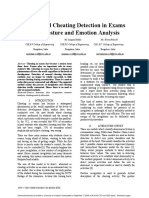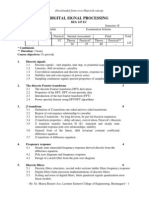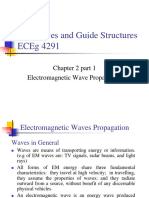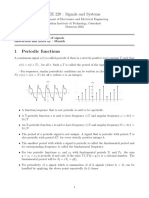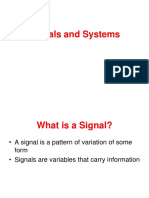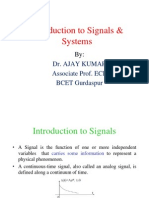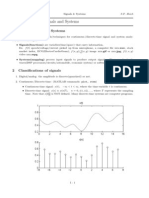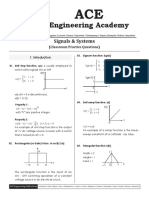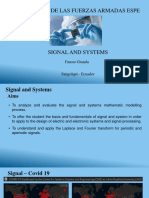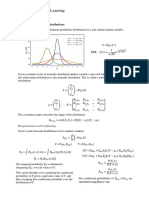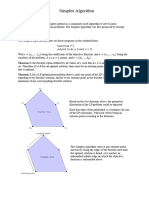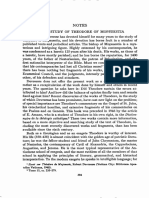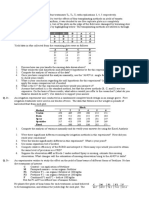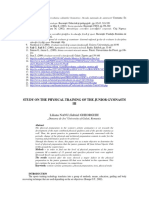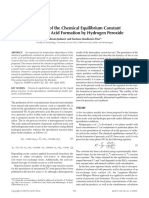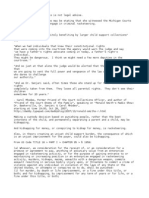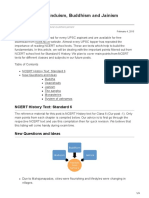0% found this document useful (0 votes)
144 views20 pagesSignals and Systems Basics
1) A signal is a function that conveys information about a phenomenon, with independent variables like time. Signals are classified by dimensionality and if variables are continuous or discrete.
2) A system processes input signals to produce output signals. Systems are classified by number of inputs/outputs and type of signals handled.
3) Signals have properties like being even, odd, periodic, bounded. Operations between signal types produce predictable results. Transformations can change a signal along the time or amplitude axis through scaling, shifting, or both.
Uploaded by
abdhatemshCopyright
© © All Rights Reserved
We take content rights seriously. If you suspect this is your content, claim it here.
Available Formats
Download as PDF, TXT or read online on Scribd
0% found this document useful (0 votes)
144 views20 pagesSignals and Systems Basics
1) A signal is a function that conveys information about a phenomenon, with independent variables like time. Signals are classified by dimensionality and if variables are continuous or discrete.
2) A system processes input signals to produce output signals. Systems are classified by number of inputs/outputs and type of signals handled.
3) Signals have properties like being even, odd, periodic, bounded. Operations between signal types produce predictable results. Transformations can change a signal along the time or amplitude axis through scaling, shifting, or both.
Uploaded by
abdhatemshCopyright
© © All Rights Reserved
We take content rights seriously. If you suspect this is your content, claim it here.
Available Formats
Download as PDF, TXT or read online on Scribd
/ 20











